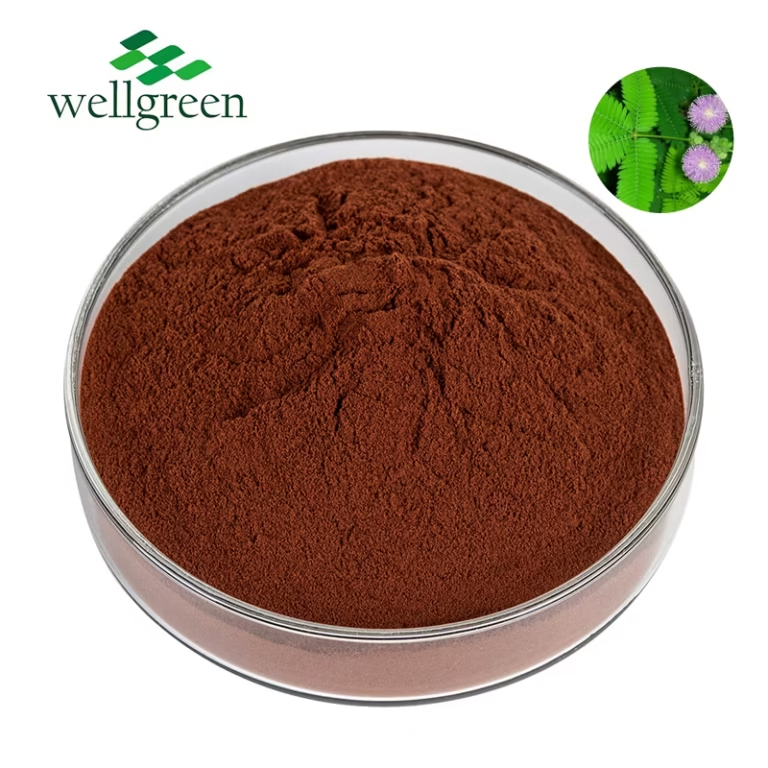Mimosa Hostilis: A Sacred Plant for Indigenous Cultures
Wiki Article

Mimosa hostilis is a significant plant deeply ingrained in the traditions of numerous Indigenous cultures across South America. For centuries, it has been employed by indigenous communities for its comprehensive spiritual and medicinal properties. The root bark, known as kahie, is particularly revered for its hallucinogenic effects, believed to unveil profound experiences that facilitate healing.
Through ceremonies, the plant spirit of Mimosa hostilis is invoked, guiding individuals on a quest of self-discovery and connection with their inner selves. The knowledge concerning this sacred plant has been passed down through generations, preserving the rich cultural heritage and insights of these communities.
Exploring MHRB Extract: Unlocking Mimosa Hostilis's Potential
Mimosa hostilis, a vibrant plant indigenous to the South American rainforests, has captured the attention of both spiritual seekers for centuries. This remarkable species harbors within its roots a potent compound known as MHRB, which has gained significant popularity in recent times.
MHRB extract is celebrated for its benefits, often associated with altered states of consciousness. Ethnobotanical studies suggest a long history of MHRB use in ceremonial rituals.
- Scientists continue to investigate the active compounds of MHRB, seeking to illuminate its full spectrum of effects.
- The intricacies surrounding MHRB usage require responsibility. It is essential to seek guidance from knowledgeable individuals before engaging in any practices involving this powerful compound.
Exploring the Ethnobotanical Uses of Mimosa tenuiflora
Mimosa tenuiflori, commonly acknowledged as "the acacia", holds a significant position within the ethnobotany tradition of diverse communities. Its multifaceted properties have been harnessed for centuries in folk medicinal practices, as well as in sacred ceremonies. The roots of this remarkable plant possess a rich spectrum of bioactive chemicals believed to exhibit healing effects.
From treating ailments like wound infections to promoting spiritual awareness, Mimosa tenuiflora has long been revered for its profound effect on human well-being.
Mimosa Hostilis Root Bark Chemistry and Pharmacology
Mimosa hostilis root bark has a complex chemical profile, primarily known for its high concentrations of alkaloids. Among these, N,N-Dimethyltryptamine and harmaline are particularly noteworthy. These compounds possess a range of pharmacological activities, including mind-altering effects. The bark furthermore various alkaloids, such as harmine, which may contribute to its comprehensive pharmacological profile.
The traditional uses of Mimosa hostilis root bark span a spectrum of therapeutic purposes, particularly in native societies. However, it is crucial to acknowledge that scientific research on the effectiveness of these uses remains restricted.
Harnessing the Power of copyright with Mimosa Hostilis
Mimosa hostilis, a shrub native to South America, has captured the interest of researchers and individuals alike for its potent chemicals, particularly dimethyltryptamine, or copyright. copyright is a powerful hallucinogenic substance known for producing intense experiences. By ingesting the bark of Mimosa hostilis, one can explore the realms of copyright-induced experiences. It is important to remember that copyright is a strong substance and should be treated with reverence.
- Responsible use is paramount, and researching from experienced individuals or knowledgeable sources is highly recommended.
- The experience of copyright can be both transformative but also potentially intense. It is crucial to prepare both mentally and physically for the outcomes that may arise.
copyright from Mimosa hostilis offers a unique opportunity to explore the depths of consciousness, potentially leading to existential growth and understanding.
Ethical considerations Using Mimosa Hostilis
The utilization of Mimosa hostilis for personal purposes raises a myriad of moral questions. While some argue that its sacred significance warrants respect and tolerance, others warn its use due to potential harmful consequences. It's crucial to consider this complex issue with sensitivity, taking into account the religious contexts and potential side effects. A nuanced perspective is essential for navigating the ethical nuances surrounding Mimosa hostilis.
Raising Mimosa Hostilis: A Guide for Growers
Embarking on the quest of cultivating Mimosa Hostilis can be a rewarding experience for the dedicated grower. This intriguing plant, native to tropical regions of the Americas, has gained significant recognition in recent years due to its unique properties. Upon embarking on your cultivation mission, it is crucial to comprehend the specific requirements this plant demands to thrive.
- Guaranteeing adequate sunlight is paramount for healthy Mimosa Hostilis growth. These plants prosper in direct sunlight, ideally receiving a minimum of ten hours per day.
- Preserving well-drained soil is essential to prevent root rot, a common issue that can destroy your plants. A mixture of loamy soil with composted matter is perfect.
- Consistent watering is necessary, but be mindful not to overwater your Mimosa Hostilis. Allow the top inch of soil to dehydrate before providing another irrigation.
The Shamanic Traditions Surrounding Mimosa Hostilis
Deep within the timeless forests of South America, the rituals of healing have been practiced for generations. Among these powerful allies is Mimosa Hostilis, a sacred plant revered by the shamanspiritual traditions of indigenous peoples. It contains within its roots a wealth of power, guiding seekers on their journeys into the otherworld.
The traditional healers understand that Mimosa Hostilis is not simply a medicinal agent; it is a bridge between worlds, connecting us to the universal energies that sustain all of creation.
Addressing Legal Issues with Mimosa Hostilis
The legal status of mimosa hostilis can be from one jurisdiction to another. This means that the permissibility of possessing, using, or growing this plant revolves around your exact place of residence.
Furthermore, laws and regulations surrounding mimosa hostilis are constantly evolving. It is therefore vital that you thoroughly research the applicable legal framework in your area.
- Seeking advice from a legal professional who specializes in plant-based substances laws is highly suggested.
- Remaining informed about any updates to the law can help you prevent any potential legal issues.
Mimosa Hostilis and Spiritual Exploration: A Journey Inward unveiling
The ancient wisdom whispered through the rustling leaves of Mimosa Hostilis calls to explorers on a mystical quest. Embarking upon this path is to reveal hidden dimensions within, where the veil between worlds thinns. It's a transformative experience that guides the soul, revealing truths latent beneath the surface. As you blend with the essence of this sacred plant, be prepared for insights that reshape your perception.
- Embrace the unknown with an open heart and a curious mind.
- Let go all expectations and allow yourself to be swept away by the flow.
- Remember, this is a path of self-discovery. Believe in your own wisdom.
The wisdom gained through Mimosa Hostilis echoes long after the experience has ended. It is a blessing that can change your life in profound and eternal ways.
Understanding the Risks and Rewards of Mimosa Hostilis
Mimosa hostilis is a plant native to South America, gaining increasing attention for its potential pharmacological properties. While it contains valuable compounds like copyright, responsible for its psychoactive effects, it's crucial to approach this plant with awareness. Understanding both the hazards and the advantages of Mimosa hostilis is essential for safe and informed use. Potential side effects can include get more info physical reactions, emphasizing the need for thorough research, responsible consumption, and a secure environment.
- It's important to consult with a healthcare professional before using Mimosa hostilis or any products derived from it.
- Proper dosage is crucial to minimize potential risks.
- Be aware of the laws surrounding Mimosa hostilis in your locality.
- Always prioritize safety and well-being when exploring the use of this plant.
 Report this wiki page
Report this wiki page